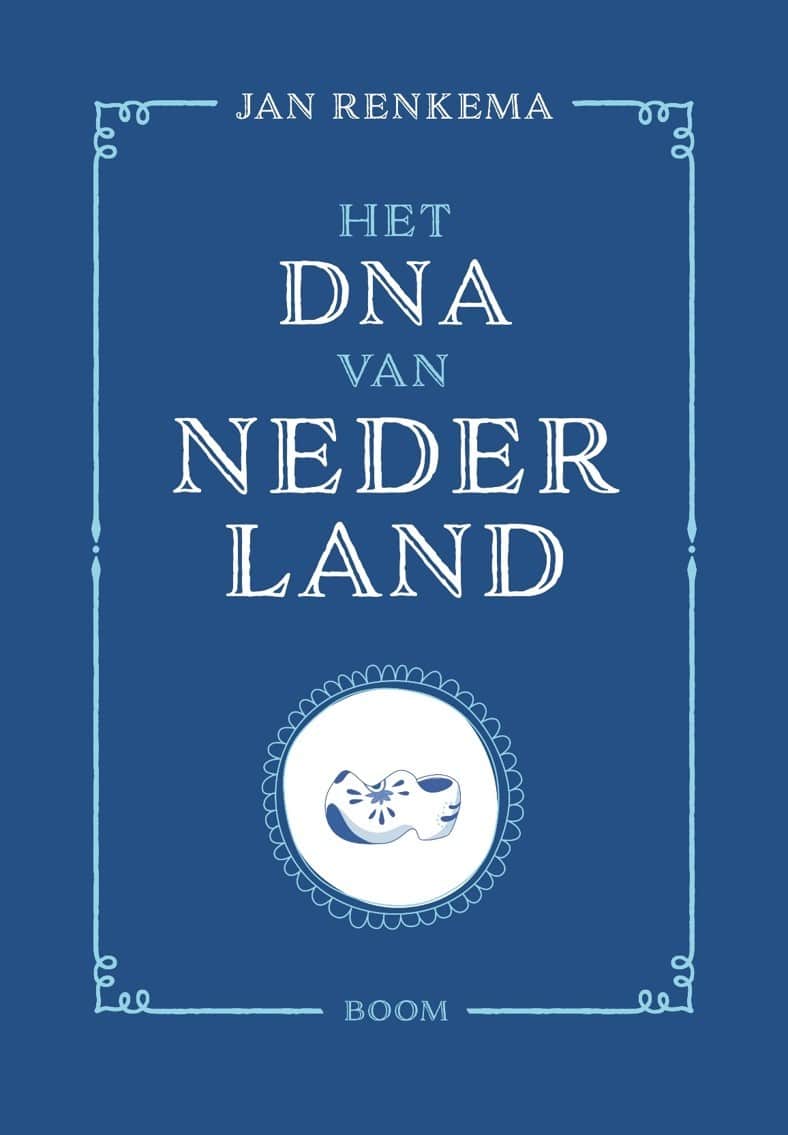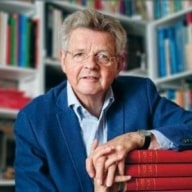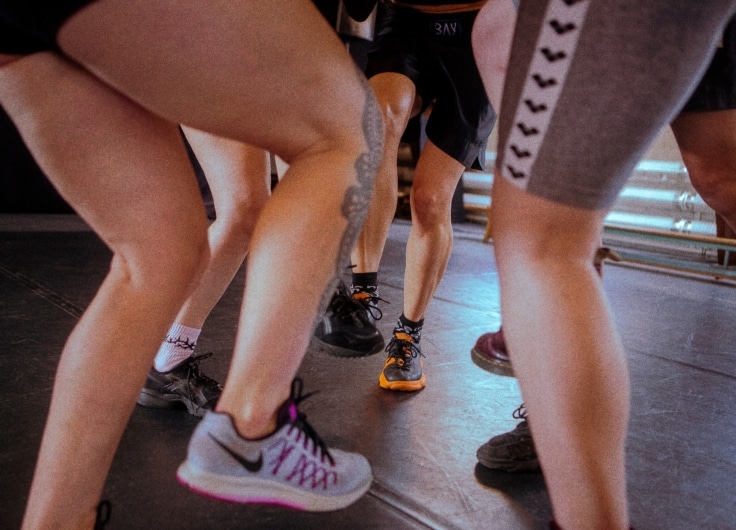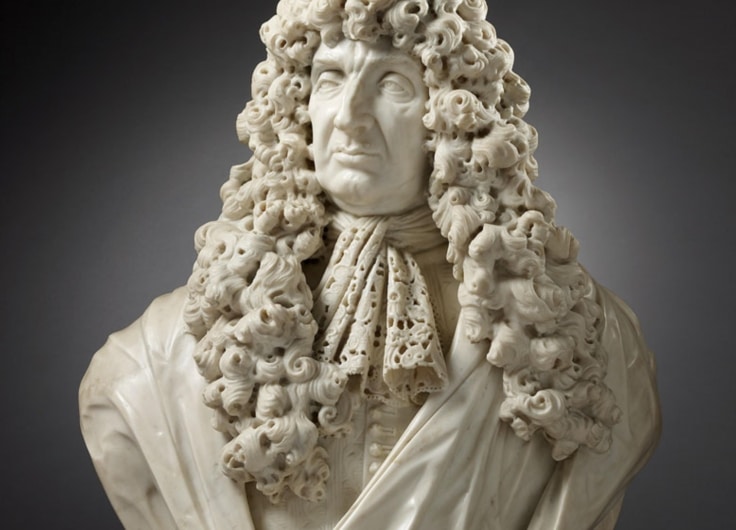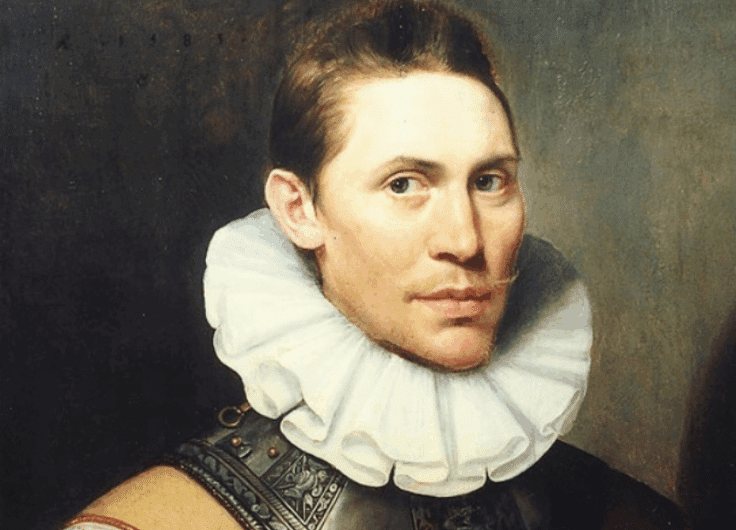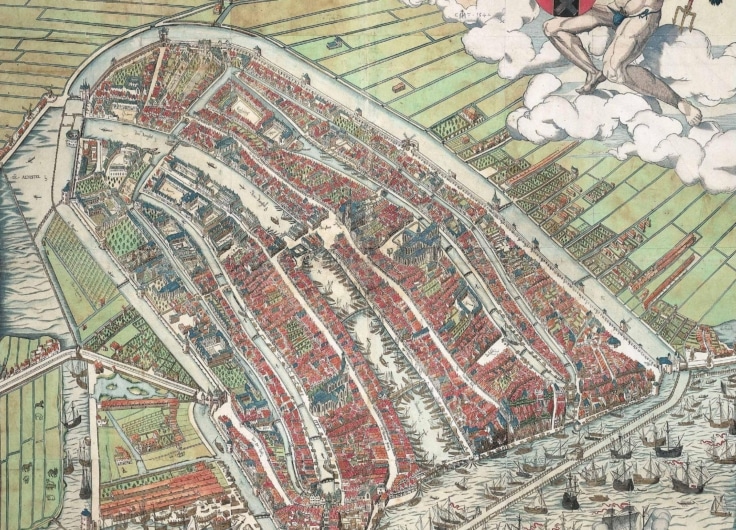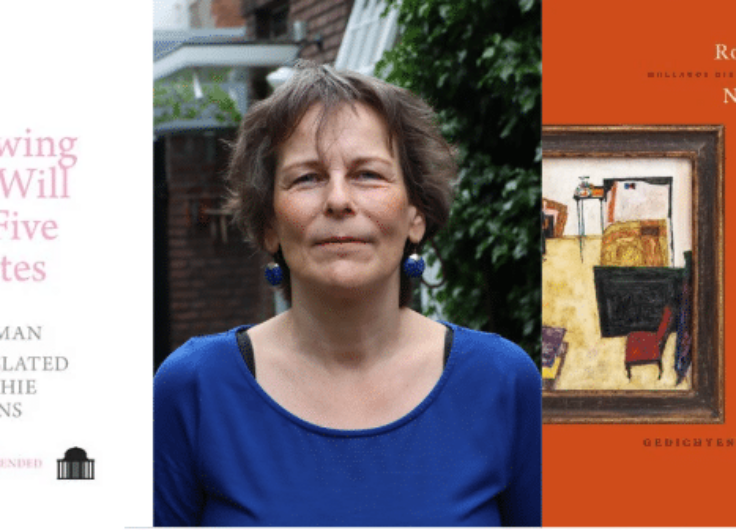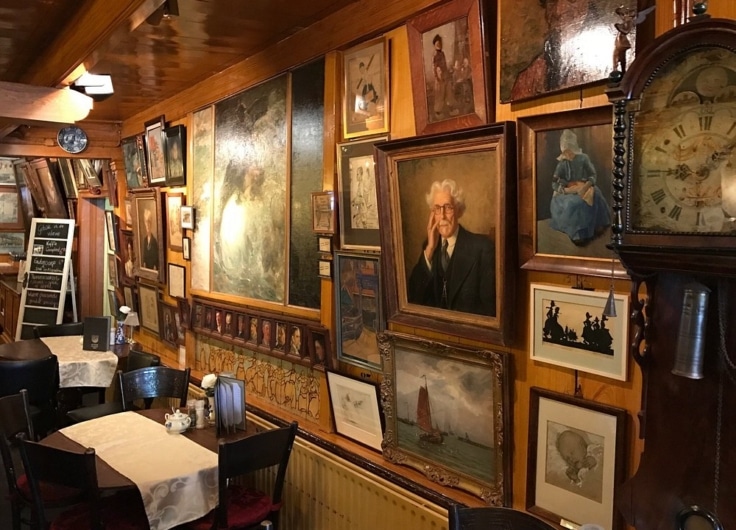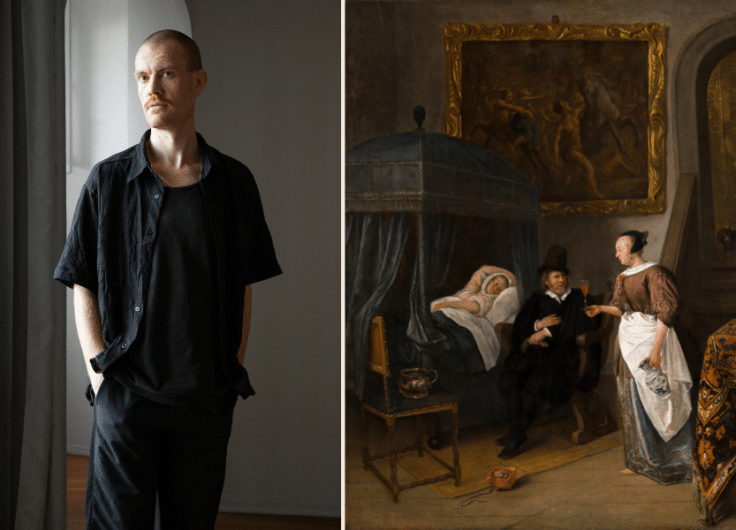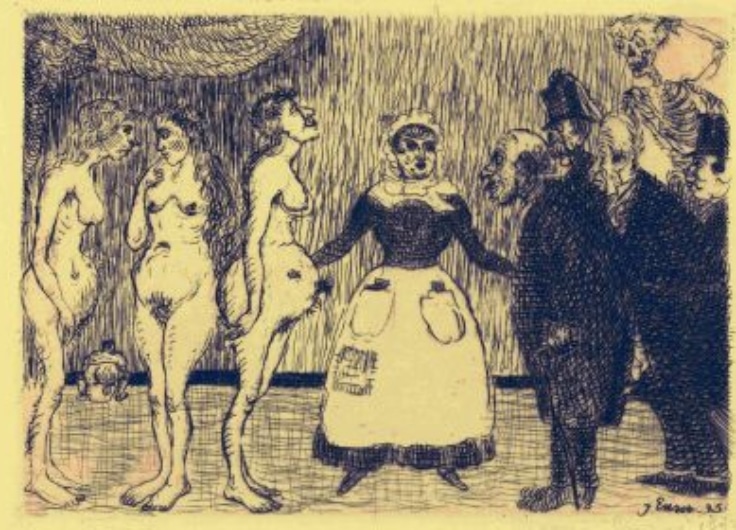A Conversation Above the Ocean. Destination: Schiphol
Is there such a thing as a ‘Dutch identity’? And if so, what does it look like? Jan Renkema provides a clear analysis of the main characteristics in his pamphlet ‘The DNA of the Netherlands’. He does this in the form of a conversation between a curious foreigner and a Dutch expert. The coming weeks we’ll present Renkema’s pamphlet in ten episodes. We start with a conversation on a flight to Schiphol. Fasten your seat belt!
“Tell me, what sort of a country is the Netherlands?”
“You mean, in terms of its identity?”
“Yes, that’s right, its identity. What makes the Netherlands stand out from other countries?”
“That’s a rather broad question. How much do you want to know? You probably already know some of the more common icons: Polders, dykes and windmills; cows, milk and cheese; clogs, tulips, peat; raw herring, split pea soup, kale and Brussels sprouts; pancakes, skates, bicycles…”
“Could you sum it up for me? I’ve heard and read a lot already, but I’ve never actually been there. I watched five brilliant video lectures by Lotte Jensen about Being Dutch, from 2016, but they were mostly about some old poems. She made a strange remark about your Wilhelmus having remained the Dutch national anthem because of the song’s vagueness. Speaking of which, what does it mean by ‘Am I of Duitsen blood?’ Isn’t that the word for German?”
“Oh, that one’s easy. Literally, it means ‘I am of Dutch blood’, because ‘Duits’ once meant both ‘Dutch’ and ‘German’. We like to think of Germany somewhat as the hinterland of the Netherlands.”
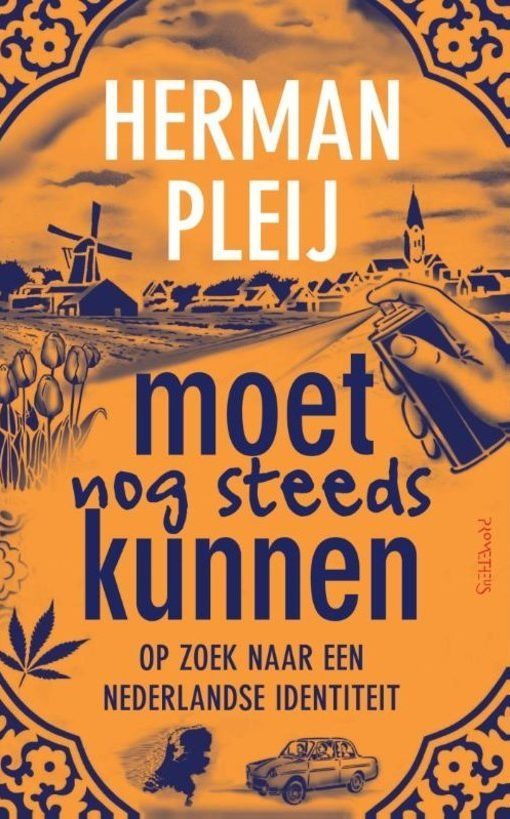
“I also read a fantastic book full of facts by Herman Pleij. Moet nog steeds kunnen, also from 2016, about how the Dutch have carved out their own identity through the ages. The book can be a little strange at times, for example, comparing your beautiful national park, the Hoge Veluwe, to an over-the-top kerststukje or Christmas table decoration. Pleij also says that on King’s Day, the entire country becomes one big street market, and that ‘within 24 hours a load of rubbish moves from one attic to the other.’ Still, it’s a good book, but I get the idea that the author is not particularly proud of his country.”
“We may not be quite as proud as we deserve to be. The Netherlands scores highly on all sorts of international rankings; competitive economies, applicants for patents, wealthiest countries (Measured in Gross Domestic Product), and so on. Our little country does relatively well in competitive sport, it is well known for its ‘Dutch design’ and has quite a major online presence. The Netherlands also scores particularly high when it comes to education, part-time working arrangements and life expectancy. Our country is known for its particular attention to the rights and liberties of individuals.”
“Okay, but surely that isn’t typically Dutch? Aren’t there many more countries where people enjoy similar freedoms, special achievements and high life expectancies?”
“Well, if you really want to know about Dutch identity, you’ll need to make time for, let’s see, eleven books, twelve poems, thirteen works of art, fourteen Dutch contributions to the world exhibitions between 1920 and 2015, and the history of fifteen typical Dutch men and women.”
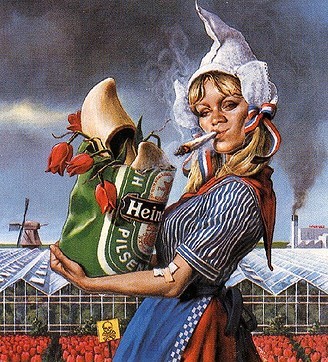 A stereotypical image of the Dutch
A stereotypical image of the Dutch“I’d prefer to get an idea before I go through customs.”
“Then we don’t have much time! Tell you what, I’ll teach you four typically Dutch words; ‘gezelligheid’, ‘privacy’, ‘landschap’ and ‘Oranje’. Take ‘gezelligheid’, which means ‘a nice, cosy atmosphere in pleasant company’. The word comes from ‘gezel’, an old term for ‘vriend’, or ‘friend’, somebody with whom you are on equal footing. Pleasant company is very important to the Dutch. Now take ‘privacy’. This word means ‘personal, private’. We took the word from English. And –”
“That’s interesting, but I’m going to interrupt you there, before you explain the rest and start talking about Sinterklaas and Black Piet or those makeshift refreshment stands at ice rinks. I’d like to hear something about the real Netherlands, preferably something brief.”
“Well, as our Queen Máxima herself has said, ‘the Dutchman does not exist.’”
“I’ve also read about that, although you’ve taken that sentence out of context. She followed with, ‘the Netherlands is too multifaceted to be summarised in a cliché.’ She wanted to express her appreciation for the great diversity in Dutch history. Are you suggesting, then, that diversity is a part of the Dutch identity?”
“So you really want a brief summary of our identity, even though there are countless studies, numerous travel reports by foreigners throughout the ages, and dozens of entertaining column collections written by expats and immigrants?”
“Absolutely. I’ve read quite a bit already, but it’s often so unclear and anecdotal. I don’t see any pattern. Identity is so often confused with this idea of image, the impression that other countries have of the Netherlands. In some South American countries they see the Dutch as brutes who murder children by means of their abortion policy, or kill their elderly with their euthanasia policy.
I’ve read enough about Russian newspapers claiming that the Dutch government deliberately encouraged a debate about the authenticity of a film star’s breasts to distract from the murder of filmmaker Theo Van Gogh in 2004, because of his anti-Islamic position. And about the Turkish president who, in 2017, blamed the Netherlands for the murder of 8,000 Bosnians during the Yugoslav Wars in the Balkans.
I’m not particularly interested in knowing about the Dutch self-image either, how the Dutch see themselves. Self-image tends to be just as far removed from reality as cultural stereotypes. Nor am I particularly interested in typical Dutch values and norms or culture.”
Self-image tends to be just as far removed from reality as cultural stereotypes
“What do you mean? Self-image, values and norms, culture – aren’t they all aspects of identity?”
“Perhaps, but I’m talking about what is underneath all of that. Let’s take self-image; I understand that the Dutch like to see themselves as a rather sober people. True as that may be, how does that correspond with the phenomenon of ‘Orange fever’ at sporting events? Many Dutch people also seem proud of their colonial past, when in fact some might say they’d do well to be a little more ashamed of their history.
Self-perceptions are often incorrect, and they don’t say much about identity as a whole. It’s true that they are closer to identity than blatant generalisations, such as that ‘the Dutch are unable to handle their emotions’, but are these perceptions typically Dutch?
Now take values; one value could be, for example, ‘freedom of speech’. Yet the same value also applies in Sweden or America. Values can manifest into cultural norms. For example, the value of ‘respect’, in regard to an opponent or someone who thinks differently, is expressed in the action of shaking hands after a lively debate. Such a habit can then become a norm to which you are expected to comply. What does that mean for identity though?
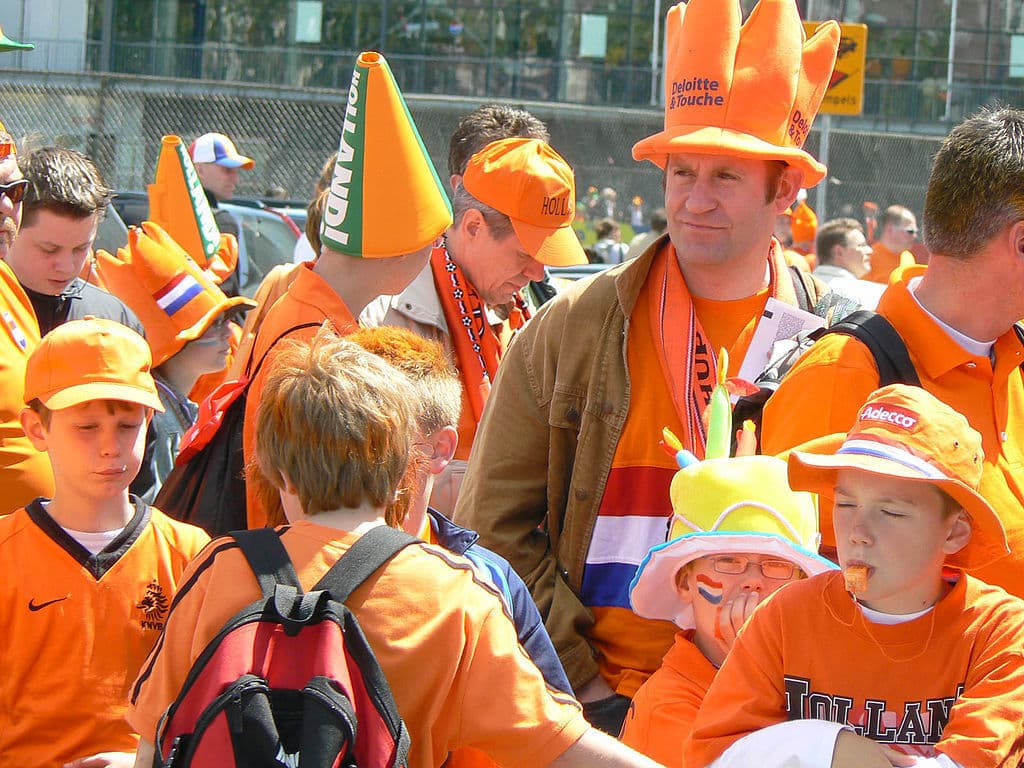 Orange fever is a phenomenon in the Netherlands that occurs during major sporting events and during Koningsdag, an annual holiday celebrating the king's birthday.
Orange fever is a phenomenon in the Netherlands that occurs during major sporting events and during Koningsdag, an annual holiday celebrating the king's birthday.© Wikipedia
In some other cultures this doesn’t happen in quite the same way. The Japanese bow to show respect, and in South Korea, a man is expected to pass through a doorway before a woman, so that he can first check the coast is clear. Muslim men are not supposed to shake hands with women, but does that really say anything about respect? These examples tell us more about Japanese and Korean etiquette and the male-female relationship in Muslim countries.
The idea of culture itself is, of course, such a vague concept. Take, for example, the Dutch custom to eat at six o’clock in the evening and watch the news at eight. Something like this might evoke a ‘typical Dutch’ image, but identity surely runs deeper than simply sharing a habit of sitting at the table at fixed times or on the couch to watch TV.”
“What you are asking is an incredibly difficult question! You are essentially asking about the DNA of the Netherlands. I’m afraid I’m not the person to answer that.”
“You mean you either don’t want to answer, can’t answer, or you don’t dare answer? Is that a typically Dutch response?”
This is your pilot speaking. We are now approaching Schiphol Airport. Right now it is busier than expected. As a result, we have unfortunately missed our landing slot and will now have to join the back of the queue. In the meantime, we will fly a few laps over the Netherlands. Enjoy the beautiful view. The current temperature in Schiphol is 18 degrees.
“So, we’re now flying around over the Netherlands. Take a look down. It’s a low-lying country. Soon we will land at 4.5 metres below sea level. Your luggage will go even deeper through a basement beneath the runway. Two thirds of the Netherlands would flood without our dykes and dunes. Our country is also completely flat, reaching to only 322 metres at the highest point on the border with Germany and Belgium. A hill of 80 metres, the Lemelerberg we call it – to us that’s a mountain!
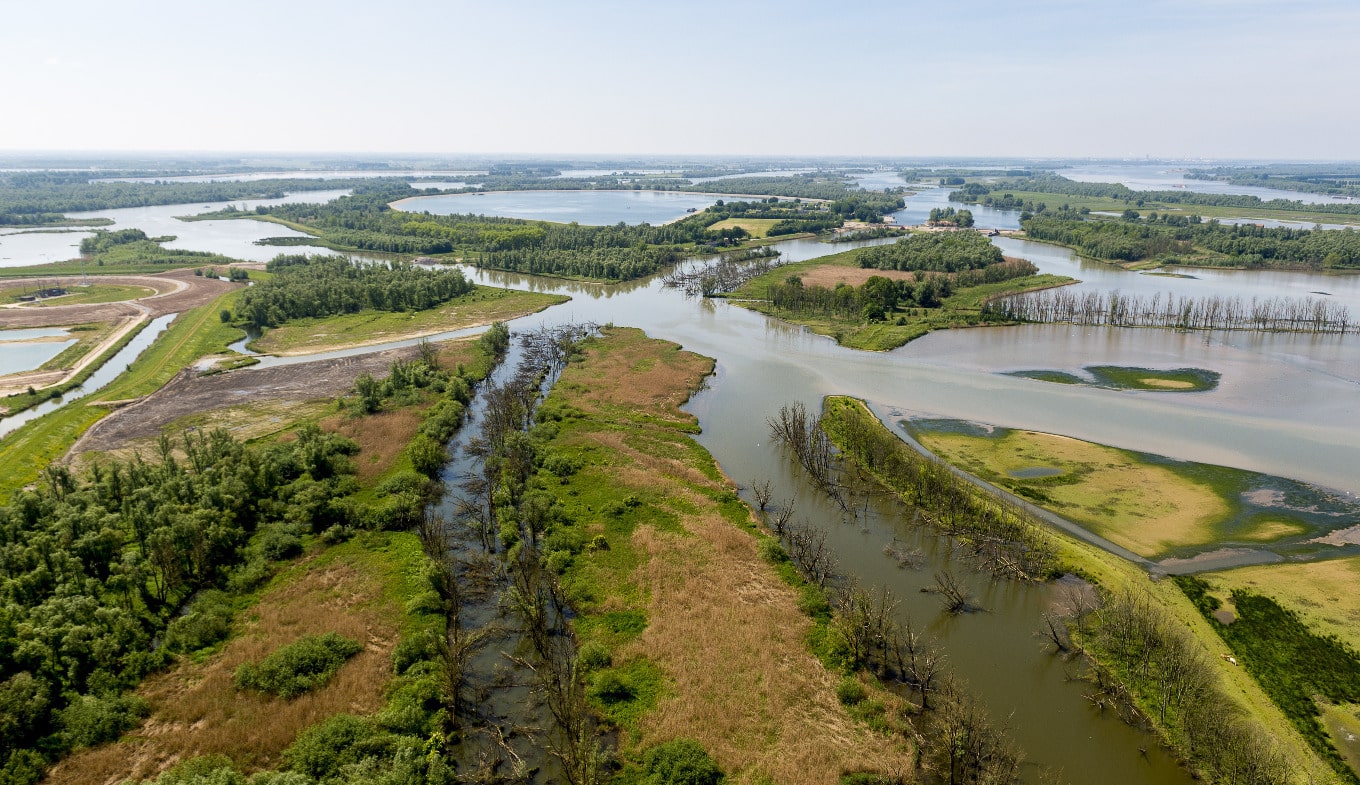 Aerial image of The Biesbosch National Park. The Netherlands is a country largely below sea level, a flat river delta with a fragmented landscape.
Aerial image of The Biesbosch National Park. The Netherlands is a country largely below sea level, a flat river delta with a fragmented landscape.© Holland.com
Do you see all of those rivers? Our country is a river delta, made up of small parcels of land surrounded by water. It has open connections both to Europe and to the sea. Quite a number of people live there, about 17 million in a country through which it takes only three hours to drive from North to South, and just two hours from the German border to the North Sea. Yet despite being so small and open, the Netherlands has always remained independent. As for our industries, we once specialised in fishing, agriculture and trade. Nowadays, trade is still one of our main industries, as well as transport.”
“Are you trying to distract me now?”
“Not at all, I’m starting to outline our identity. The Netherlands is a country largely below sea level, a flat river delta with a fragmented landscape. Open, independent, densely populated and born of import and export.”
“So you’re saying that the landscape and livelihood determine the country’s identity?”
“Well, the more intellectual among us might say otherwise. But this prime view of the country below helps to frame our identity very nicely. And the relationship between land and identity fits too well to be ignored.
I reckon we’ll be circling up here for a while before we can land, so sit back and relax. To begin with, let me tell you a story, a myth about the origin of the Netherlands. Rather remarkably, this myth mainly tends to be told abroad. I first heard it in China, I believe, and once again later in Chile.”
The origin of the Netherlands
The Creator of the World divided up all of the countries and seas, and separated each climate from desert to tundra, each occupied by a great variety of flora and fauna. At last, the time had come.
All of the Earth’s people were longing to be assigned a piece of land. The largest portion of land would become known as Asia. Many of the more tropical regions were given to the darker skinned populations. And the many white communities were spread as much as possible over smaller areas. Everybody went on a joyful journey to their indicated country. The Creator leaned back, satisfied with his work.
Yet this harmony was not felt by all. One small group called out desperately, “What about us? Where must we go? We have been forgotten! You have overlooked us!” And so the Creator looked around in alarm.
“Well. You shall live there, at that little spot near the North Sea, there in that river delta. I know it is sombre, it is soggy, it is a swamp. But I did my best to have the sun shine brightly through the clouds, making them glow as they soar gently through the sky.”
“But there is no land there, it is just the bottom of the sea!” contested the group.
The creator replied, “I’m sorry, but I have already given away all of the countries in the world. But I will make you stronger and more unified. You are going to conquer those Low Countries beneath the sea. And that is why your country will from this point be known as the Nether-lands.”
